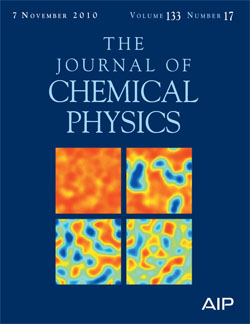Lab research highlights new glass-forming system
The cover of a recent issue of the Journal of Chemical Physics highlights a paper coauthored by Condensed Matter and Materials Division researcher Tomas Oppelstrup with colleagues from the Royal Institute of Technology (Stockholm, Sweden) that looks into a plausible glass-forming system.
The paper describes the first physically plausible glass-forming system in which the glass phase forms via an equilibrium, first-order phase transition from a stable liquid phase. Glasses are typically formed by cooling a liquid. A glass can form either by a continuous slowing down of the molecular kinetics, or by a first order phase transition.
Before this work, the second scenario had only been predicted to occur below the melting point, and avoiding crystallization had been a formidable problem. Oppelstrup and colleagues performed a molecular dynamics simulation of a one-component system with a model metallic pair potential, which can be taken to represent an ideal glass former -- a liquid that does not crystallize under cooling. The only ideal glass formers previously known have been atactic polymers and some electrolytic solutions.
Besides the intrinsic scientific merit of this work (e.g., the paper was the 12th most downloaded paper from the Journal of Chemical Physics in the month of November), the result has significant technological implications, and suggests a new strategy for the design of bulk metallic glass formers.
To read the full article, which appeared Nov. 7, go to the Scitation Website.





